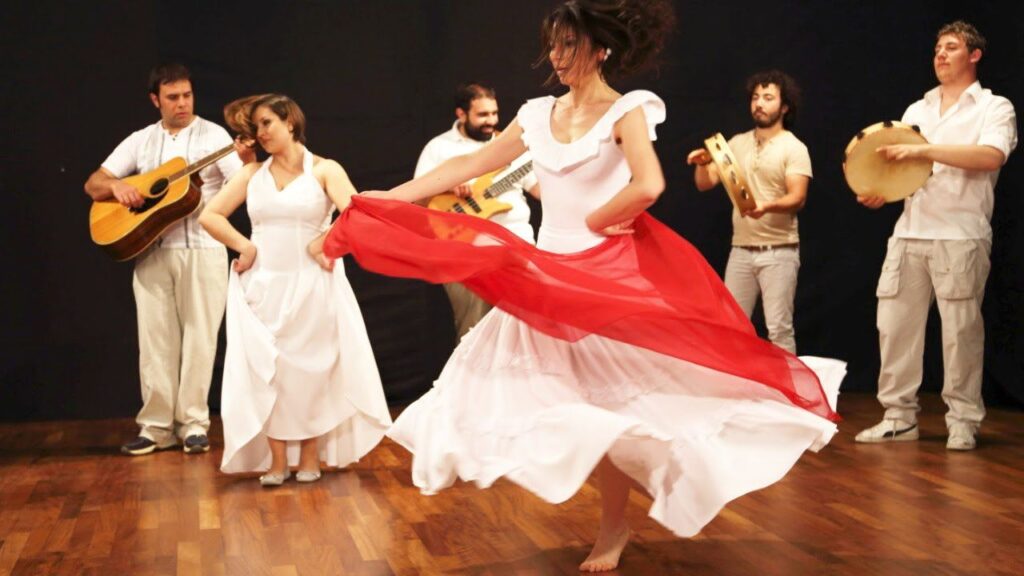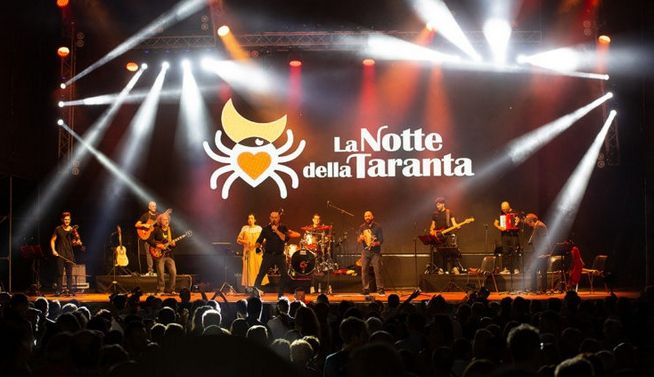The “pizzica tarantata” is the music that marked the ancient healing ritual against the bite of tarantula, the dangerous poisonous spider.
According to tradition in order to drive out the demon thought to have taken possession of the victim, generally a woman, tambourines should be beaten incessantly.
The dizzily rhythmic sound of the tambourine combined with a frenzied hypnotic dance healed of the poison.

The ritual exorcism could happen at the church, in the public square of the town or at home and often other women and men danced with the bitten girl. It was said, at the end of the exorcism, that the girl had been pardoned by St.Paul
The Taranta dance: (Spider dance) usually consisted of three phases: first the woman crawled and clapped her hands and feet following the tambourines’ rhythm, then she have herself up and while jumping and dancing she drawn wide figures in the air with a colored foulard she had in her hands; at last she began to reel till she collapsed. Pizzicarella dance – The Pizzica do’ Core (pinch from the heart) or courtship dance expresses the feelings of love, eroticism and passion in the courtship between a man and a woman: a woman dancing to the frenzied rhythm of tambourines and violins, waving a red scarf, the color of passion, and doing so inviting the man she likes the most to dance with her.
Tired of this new dancing partner, she invites another and yet another at her will. A the end of the dance she will give the red scarf to the man who steals her heart.
Now days behind the taranta’s possession it sees the effect of a very strong will of redemption and deliverance and, possibly, even of an exhibition of the subordinate role of the women.
In Melpignano, a small town in the province of Lecce, every year since 1998, in a night of August, a musical event known as La Notte della Taranta, has been held.

The event takes place in a large open space in front of the evocative architectural complex of the Church del Carmine and the Convento degli Agostiniani monastery, which dates back to the 16th century and forms the backdrop to the event.
The festival is associated with the concept of neo-tarantismo, which is also linked to a desire to get away from the boring and stultifying rhythms of everyday life in the modern world (how ironic). “Neo-tarantismo” has quite different connotation to the music and dances of tarantismo in its traditional form, which lasted until the middle of the 20th century.
The musical event was born from a desire to innovate and contaminate the traditional music of the Salento, experimenting with new sounds and the traditional music of other popular cultures.
The Pizzica is the sort of music you can feel in the very dirt of the place.
Like the blues of the Mississippi delta, the musical form baked under the cruel sun of this extreme southeastern limb of Italy took root in the fields. It was a tautly-wound, fiercely upbeat musical release valve from the inescapable pressures of a life of hard work, under a rigid social system.
Courtesy of http://www.madeinsouthitalytoday.com/